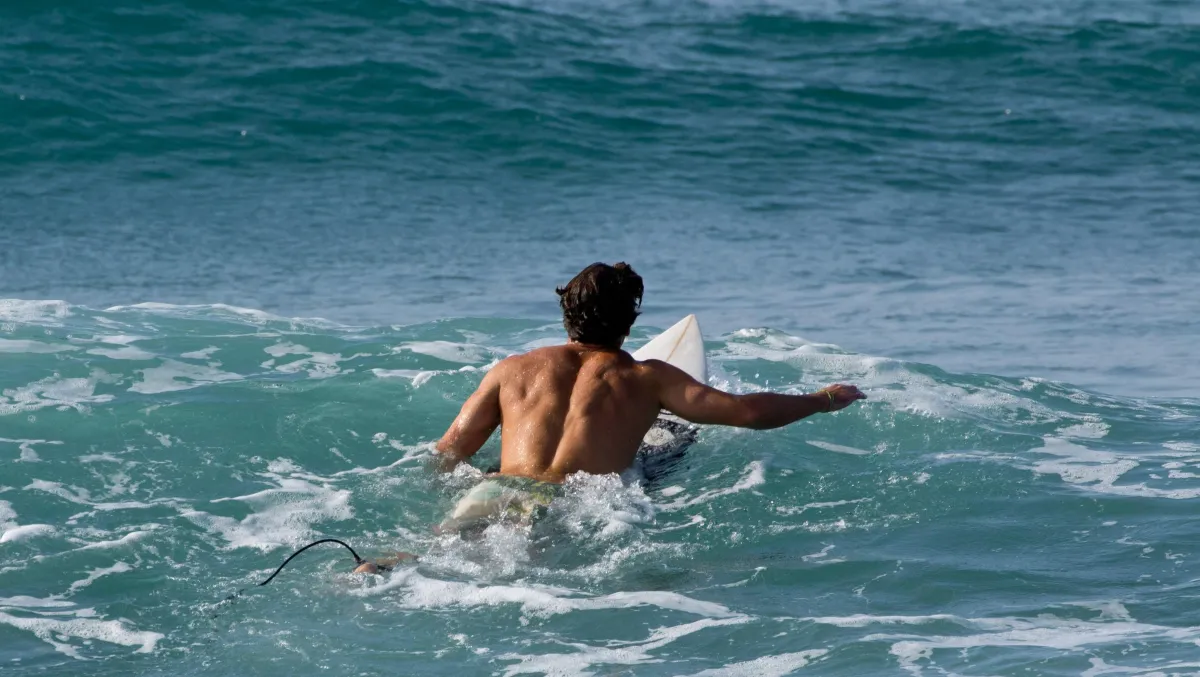
The Science of Surfing: Understanding the Physical Demands of the Sport
The Science of Surfing: Understanding the Physical Demands of the Sport
Surfing is often romanticised as a laid-back pursuit where athletes gracefully ride waves in harmony with nature. While this poetic view captures the sport's essence, it fails to acknowledge the intense physical demands that surfing places on the body. At Surf Performance Systems, we've spent over 15 years studying these demands and coaching surfers of all levels to meet them.
In this comprehensive guide, we'll break down the science behind surfing's physical requirements and explain why proper physical preparation isn't just beneficial—it's essential for both performance enhancement and injury prevention.
The Hidden Physical Reality of Surfing
When most people think of surfing, they picture the exhilarating moments of riding waves. However, research reveals a different reality about how surfers actually spend their time in the water:
50–80% paddling: The majority of a session is spent paddling—whether to get past breaking waves, reposition, or return to the lineup.
4–8% wave riding: The actual time riding waves is surprisingly small.
28–42% waiting/stationary: Waiting for the right wave occupies a significant portion.
2–5% miscellaneous activities: Includes duck-diving, wipeout recovery, and repositioning.
These statistics underscore the importance of training not just for wave riding, but for the full physical scope of surfing—especially paddling.
The Physiological Demands: What Research Tells Us
Cardiovascular System Under Pressure
Surfers maintain an average heart rate of 70–80% of max during sessions, with peaks reaching 95% during intense efforts. Surfing mimics high-intensity interval training (HIIT) through:
Sustained, moderate paddling
Short, high-intensity paddles
Brief rest periods
Max-effort wave riding and recovery
This fluctuating intensity places unique demands on the cardiovascular system.
Muscular Fatigue and Performance Decline
Studies show that even one paddling cycle leads to:
Reduced force production
Decreased paddling efficiency
Technical degradation
Lower wave-catching ability as fatigue builds
This feedback loop of fatigue accelerates performance decline across a session.
Energy Systems Utilisation
Surfing engages all three energy systems:
ATP-PC system: For explosive pop-ups and turns
Glycolytic system: Fuels intense paddling bursts
Aerobic system: Supports sustained paddling and recovery
Efficient use of all three is essential for peak performance.
The Four Physical Pillars of Surfing Performance
1. Strength: The Foundation
Upper Body Pushing and Pulling
Paddling produces up to 35% body weight per stroke
Strong lats, deltoids, and triceps are crucial
Push-up strength correlates with pop-up efficiency
Core and Trunk Stability
Core transfers power between upper and lower body
Anti-rotational strength aids balance during turns
Core endurance reduces lower back pain
Lower Body Power
Leg strength drives speed and powerful turns
Glutes, quads, ankles, and feet contribute to board control
2. Power: Speed Meets Strength
The Pop-Up
Elite surfers pop up in under 0.5 seconds
Explosive strength in upper body and core is essential
Faster pop-ups = more waves caught
Wave Generation and Maintenance
Lower-body power improves turn dynamism and speed
Rate of force development enhances responsiveness
Paddling Acceleration
Faster acceleration helps win positioning battles
Stroke force and power are key in crowded lineups
3. Movement Quality: Efficiency and Injury Prevention
Mobility and Stability
Balance between mobility and control is critical
Shoulder and thoracic spine mobility are performance indicators
Movement Pattern Quality
Clean movement patterns prevent energy leaks and injury
Higher movement quality scores = fewer injuries
Asymmetries and Imbalances
Surfing is asymmetrical by nature
Addressing imbalances improves performance and reduces injury risk
4. Cardiovascular Fitness: The Engine
Aerobic Capacity
Improves recovery between waves
Enhances paddling efficiency and oxygen use
Anaerobic Power
Enables repeated high-intensity efforts
Sustains wave-catching ability late into sessions
Recovery Efficiency
Faster recovery = more consistent performance
Better blood flow = quicker tissue repair and adaptation
The Injury Connection: Prevention Through Preparation
Understanding the physical demands is key to avoiding injuries. Research shows:
Shoulder injuries: 18–23% of surfers, mainly due to paddling mechanics
Lower back pain: Affects 23–38%, tied to core weakness and rotational forces
Knee injuries: 12–27%, often from aggressive manoeuvres and awkward landings
How preparation helps:
Tissue capacity: Conditioned muscles and joints handle more stress
Movement quality: Reduces mechanical overload
Cardiovascular fitness: Boosts tissue repair and readiness
Fatigue resistance: Preserves technique under stress
Practical Applications: Bridging Science and Surfing
For Beginner Surfers
Build basic strength and movement quality
Prioritise shoulder health and paddling stamina
Learn pop-up mechanics on land
Improve aerobic fitness with regular training
For Intermediate Surfers
Address weaknesses across the four pillars
Add power training for faster pop-ups and stronger turns
Focus on paddling technique and strength
Start correcting asymmetries and compensations
For Advanced Surfers
Balance all physical components systematically
Use periodised training to peak for key sessions
Track metrics across strength, power, and endurance
Customise recovery strategies to support adaptation
Conclusion: The Informed Approach to Surfing Fitness
Surfing is one of the most physically demanding sports, requiring:
Strength
Power
Movement quality
Cardiovascular fitness
With systematic physical preparation, you can:
Catch more waves
Surf them better
Stay injury-free
Extend your surfing career
At Surf Performance Systems, we translate science into results for surfers of all levels. Physical preparation isn't just for pros—it's for anyone looking to maximise their time in the water.
In future articles, we'll explore targeted training strategies for each pillar, giving you practical tools to elevate your surfing performance and longevity.
"The only thing truly specific to surfing is surfing itself. But with intelligent physical preparation, you can be ready to make the most of every wave."
About the Authors
Sam Guy and Rob Smaldon are the founders of Surf Performance Systems, with over 15 years of experience operating a performance gym in Cornwall. Since earning UKSCA accreditation in 2015, they’ve helped surfers of all levels improve performance and reduce injury risk through evidence-based, sport-specific training.